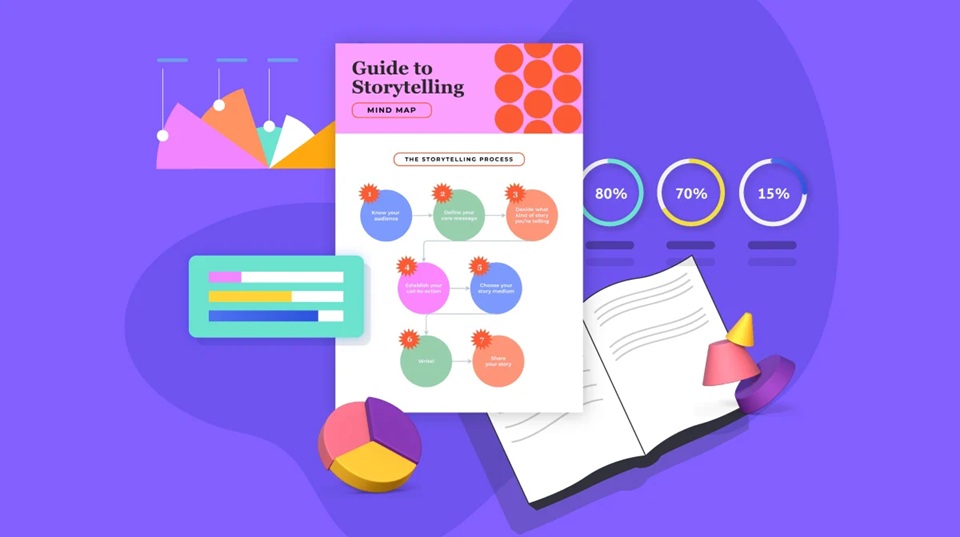
Mastering Data Storytelling with the Bar of Pie Chart
Among the many chart types available to analysts, the bar of pie chart stands out for its ability to break down complex datasets into digestible insights. While it may appear simple at first glance, this chart type can significantly alter how your audience interprets and understands proportions within a dataset.
Whether you’re working on market share analysis, sales distribution, or any scenario where certain segments deserve a closer look, the bar of pie chart can help you go beyond standard pie charts and bring clarity to your presentation.
What is a Bar of Pie Chart?
A bar of pie chart is a variation of the traditional pie chart designed to make small or grouped categories more visible. In a regular pie chart, categories with small values often become so thin that they’re hard to read. The bar of pie format solves this problem by taking a section of the pie, usually labelled as “Other” or “Miscellaneous,” and breaking it out into a separate bar chart.
This split offers a clearer view of the smaller categories while maintaining the overall context of the pie chart. It is particularly useful when you have more than five or six categories, and you want to ensure each segment is represented clearly.
Why Use a Bar of Pie Chart?
The bar of pie chart is more than just a visual tweak; it addresses several common data visualisation challenges:
- Improved readability: Viewers can easily see details of smaller categories without straining to read thin pie slices.
- Better storytelling: The split view allows you to highlight important, smaller segments that might otherwise get lost.
- Balanced context: You maintain the overall picture while offering a magnified view of the details.
- Increased engagement: Breaking out data adds a visual dynamic that captures audience attention.
Real-World Use Cases
The bar of pie chart can be applied in various industries and use cases, such as:
- Market share analysis – Showing the distribution of competitors while zooming in on smaller brands.
- Sales data – Highlighting niche products in a portfolio while keeping the big picture intact.
- Customer segmentation – Presenting demographic breakdowns, with detail on smaller but valuable segments.
- Budget allocation – Displaying an organisation’s spending categories while focusing on smaller yet important expenses.
Creating a Bar of Pie Chart Effectively
While the bar of pie chart is visually appealing, it’s important to design it thoughtfully to avoid clutter or confusion. Here are some tips for making the most of this chart type:
1. Keep categories logical
Ensure that the grouped “Other” category in your main pie chart is meaningful and not random.
2. Limit the number of splits
Too many segments in the bar chart can be overwhelming. Focus on highlighting only the categories that require attention.
3. Use consistent colour coding
Assign colours thoughtfully so viewers can easily match categories between the pie and the bar.
4. Label clearly
Each slice and bar should have clear labels and percentages to aid quick comprehension.
5. Provide context
If the chart is part of a larger presentation, include a short description of why certain segments were chosen for the bar breakdown.
The Role of Power BI in Enhancing Bar of Pie Visuals
For professionals working with Microsoft’s analytics platform, Power BI bar of pie functionality takes this visual to the next level. In Power BI, this chart can be made interactive, allowing viewers to click on different sections to drill deeper into the data.
With interactive capabilities, you can:
- Link your bar of pie chart to detailed reports.
- Enable tooltips for instant insights without cluttering the chart.
- Apply filters dynamically for customised views.
- Integrate with other visuals for a connected storytelling experience.
By combining the clarity of a bar of pie chart with Power BI’s dynamic features, you can create reports that not only inform but also engage stakeholders at many levels.
Common Mistakes to Avoid
While the bar of pie chart is powerful, it’s easy to misuse it if not designed with intent. Some common pitfalls include:
- Overloading with categories: Including too many details in the bar section can lead to information overload.
- Poor category grouping: If the “Other” category contains unrelated items, it may confuse viewers.
- Neglecting proportion accuracy: Ensure that the pie and bar sections are visually proportionate to maintain data integrity.
- Overcomplicating with design: Avoid unnecessary 3D effects or patterns that distract from the data.
Best Practices for Presenting Bar of Pie Charts
To make your bar of pie charts stand out and effectively communicate your message:
- Start with a clear purpose – Know why you’re targeting specific segments.
- Pair with commentary – Add short explanations to help non-technical audiences understand key points.
- Use as a highlight tool – Don’t replace all charts with this format; reserve it for data that benefits from focused magnification.
- Combine with other visuals – Pair your bar of pie chart with tables or trend lines for a more complete picture.
The Future of Data Visualisation
As businesses collect more data, the demand for clear and concise reporting continues to grow. Visuals like the bar of pie chart will play a vital role in bridging the gap between complex datasets and actionable insights. When paired with advanced analytics platforms, these charts become more than static images; they evolve into interactive storytelling tools that can guide decision-making in real-time.
The future will likely see more hybrid chart types, AI-driven recommendations for data grouping, and even automated insight generation. In this context, the bar of pie chart will remain a valuable option for those who need to combine overview and detail in a single visual.
The bar of pie chart is a powerful tool for turning complex, multi-category data into a clear and compelling story. It preserves the big-picture context of a pie chart while offering a detailed view of smaller segments that deserve attention. When enhanced with platforms like Power BI bar of pie, this visual becomes even more dynamic, offering interactivity, drill-through options, and customised insights. By using it thoughtfully, avoiding clutter, grouping logically, and presenting with purpose, you can ensure your audience not only understands your data but remembers it.







